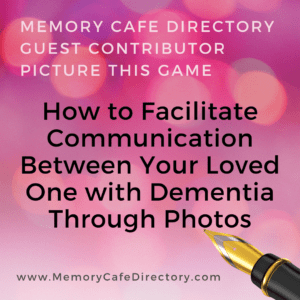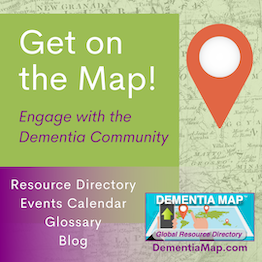Memory Cafe Directory posts and/or links to retailers can be advertising, sponsored, or affiliate links. We may earn a small commission from them. Thank you.
How to Facilitate Communication Between Your Loved One with Dementia Through Photos
Submitted by:
Picture This Game
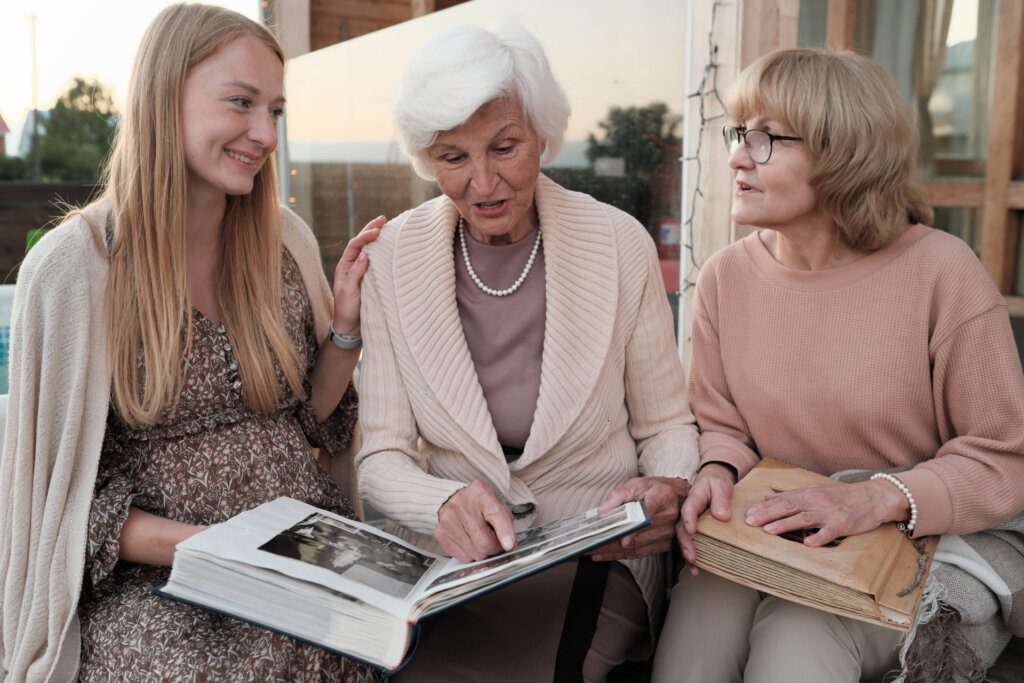
We all enjoy looking back on special memories. From birthdays to weddings, or graduations to retirement parties, we each have our favorite moments we love to reminisce from our own lives. For our aging loved ones, especially those with memory loss caused by dementia, it can be hard to recall personal memories.
When your loved one’s memory declines, conversations can become challenging. Facilitate communication between your loved one with dementia and family members through the power of photos.
Practice Reminiscence Therapy
Browsing through your loved one’s photos is an example of Reminiscence therapy, also known as Life Review Therapy. It encourages your loved one to recall and share important memories in their lives. Practicing Reminiscence Therapy using photos is a great memory care activity for your loved one with dementia.
Photographs are proven to trigger memories far better than just words. They play a crucial role as a visual aid for your loved one to remember their favorite memories. Use various photos from different periods of their life to help them connect past memories and people to their present reality.
Benefits of Reminisce Therapy
When your loved one participates in Reminiscence Therapy, they also gain the benefits that come with it. Research shows that Reminisce Therapy improves your loved one’s overall health and wellbeing. Reminiscing good memories provides a sense of joy which can help your loved one cope with stress and depression. The positive feeling they get from this activity helps prevent unwanted behaviors such as wandering, anxiety, agitation, and other factors.
Family members may learn something new through the stories your loved one shares. Maybe you never knew your father helped build the barn in the background of a beloved family photo. Family stories like these can be shared and also be passed down from one generation to the next generations.
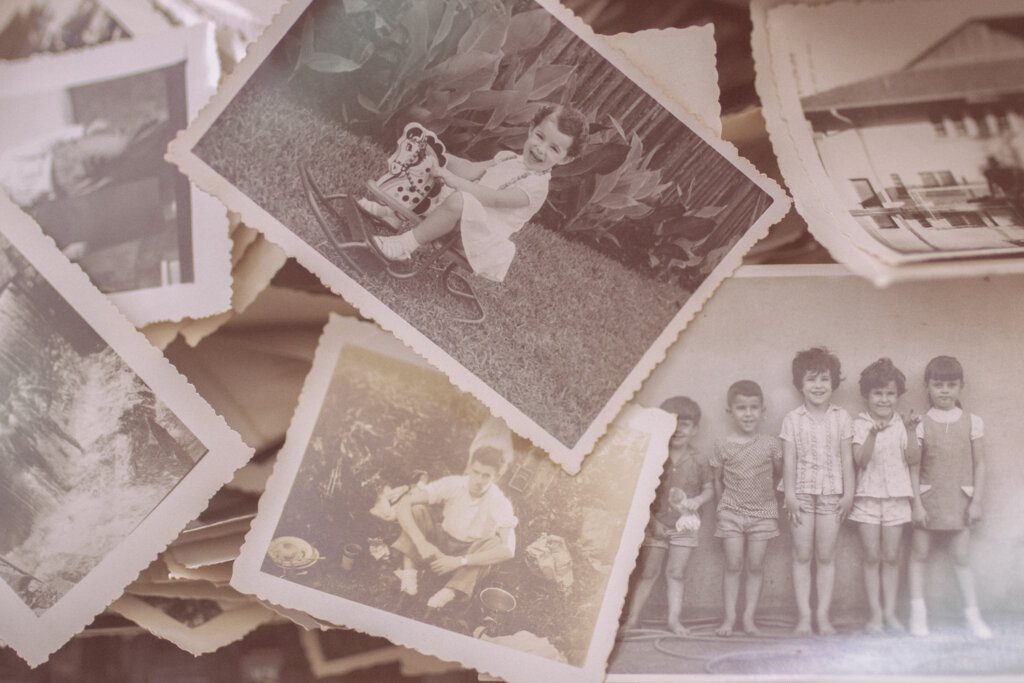
Create a Memory Book
Create a memory book showing your loved one’s personal history. Your loved one can easily look back on their life events through this book. Start by organizing your loved one’s pictures together in a photo album or binder. Arrange photos in chronological order to help your loved one remember events by establishing an accurate timeline. Include short descriptions with the photos to refer to when your loved one has questions.
Encourage other family members to be involved in making your loved one’s memory book. When all parts of the family tree come together to create the memory book, it becomes a wonderful experience when looking back on your loved one’s life.
Facilitate Communication
Try to find a calm and comfortable place to review the memory book to better communicate with your loved one. Looking through old photos with your loved one allows them to share their memories rather than just listening to others talk.
A good starting point for a conversation is when your loved one first recognizes something in the photo. By using photos familiar and personal to them, your loved one will feel socially integrated and comfortable in the conversation.
If your loved one is having trouble recognizing family members in the present, Reminiscence Therapy can help minimize this disconnect. Even though your loved one might not recognize how the person currently looks, they may still remember them as this person’s younger self.
For example, it’s common for parents with dementia to expect their adult children to be small again. Including images in the memory book of this family member at different ages may help your loved one more easily make the connection that this is the same person they remember.
Not all photographs will trigger your loved one’s memories. Just continue browsing through different photos from several events. Don’t worry about the outcome, taking the time to do an activity together and your companionship also provides your loved one with joy.
Engage in the Conversation
When your loved one starts to recall memories, continue the conversation by asking questions about the photos. Ask questions like, “How did you feel in this photo?” or “What was your favorite part about this day?” Ask about details as well, or mention something specific in the photo.
Make sure to give your loved one enough time to process your questions. Wait patiently for their response as it might take them some time to think back and reflect. It’s perfectly okay if they answer some of the questions inaccurately, what’s important is they’re engaged in the conversation.
Your loved one may find it challenging trying to maintain a conversation with multiple threads. Try to keep it simple and concise. Keep the conversation going by also sharing your memories from the photos. A detail you share might spark a memory or help your loved one recall the event more accurately.
Sometimes not all pictures bring up happy memories. Be prepared to offer comfort when they experience negative emotions. If they start becoming emotional, let your loved ones tell their story and acknowledge how they feel. Looking back on unresolved memories can provide closure for your loved one. Once they have expressed their emotions, remind them about happier memories so they won’t be distressed.
Plan a Fun Activity Using Pictures
Use an app such as the Picture This Game to create your own card-matching memory game with your loved one’s photos. Upload your own photos to the app and use the caption feature to help remind your loved one of the names of people or events.
The process of finding a pair of matching photos will exercise your loved one’s short-term memory. Selecting the correct caption will engage their long-term memory and help them recall names of those in the photo or the time period the event occurs.
Playing the Picture This Game before holidays can help refresh their mind and can ease the stresses large family gatherings may cause. The game’s simple premise combined with the use of meaningful photos can provide a mentally stimulating and potentially therapeutic exercise.
Beyond that, the Picture This Game can create a valuable sense of accomplishment when a successful match is made. You can even track your loved one’s progress by viewing the statistics of their card match rate and caption match rate right in the app. Let your loved one play the Picture This Game to trigger deep memories and help connect them to their present realities.
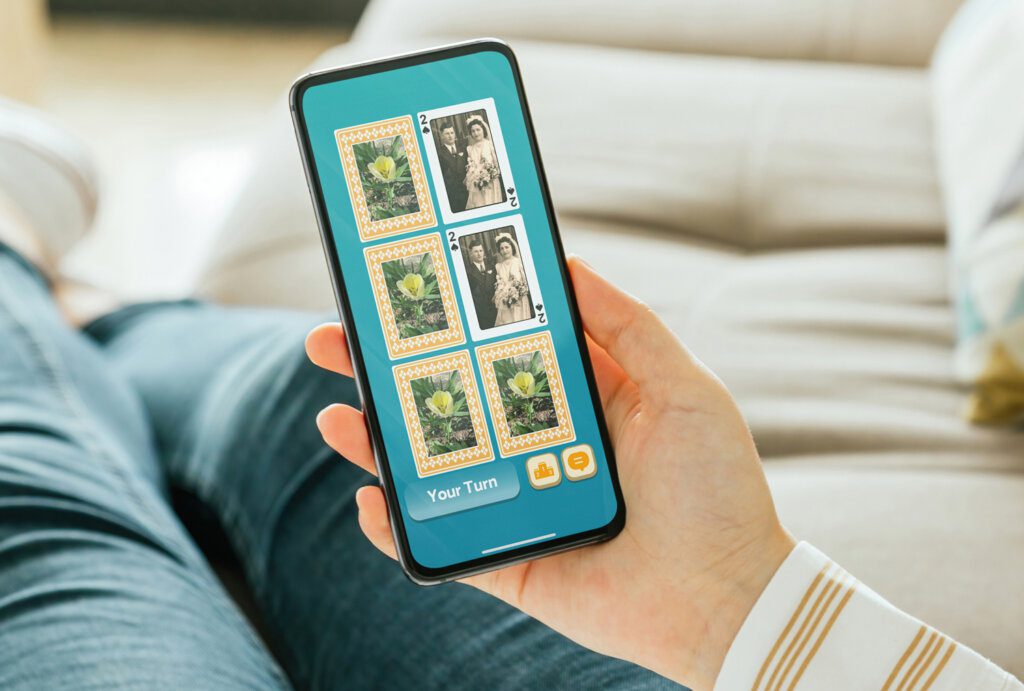
Continue Making Memories
Old photos may help trigger your loved one’s memories, but it is also essential to keep them aware of their current daily life. Keep a camera or your smartphone close to you and remember to take pictures of important moments or new faces. Take time to revisit recent pictures to help your loved one remember the faces of people they just met or family events that just happened.
Better Connection with Loved Ones
Communication is essential for building relationships with your loved ones since it helps how we relate to each other. It’s even more important when factors such as dementia feel like they are creating distance between the person you knew and their behavior now.
Engaging them in conversations around photos also creates a better connection between you and your loved one by connecting past memories with current realities.
About the Author: Picture This Game
Picture This Game is a free mobile app that puts a spin on the age-old card-matching memory game. Upload your pictures for the images to match and invite others to play!
For more information, visit PictureThisGames.com.


